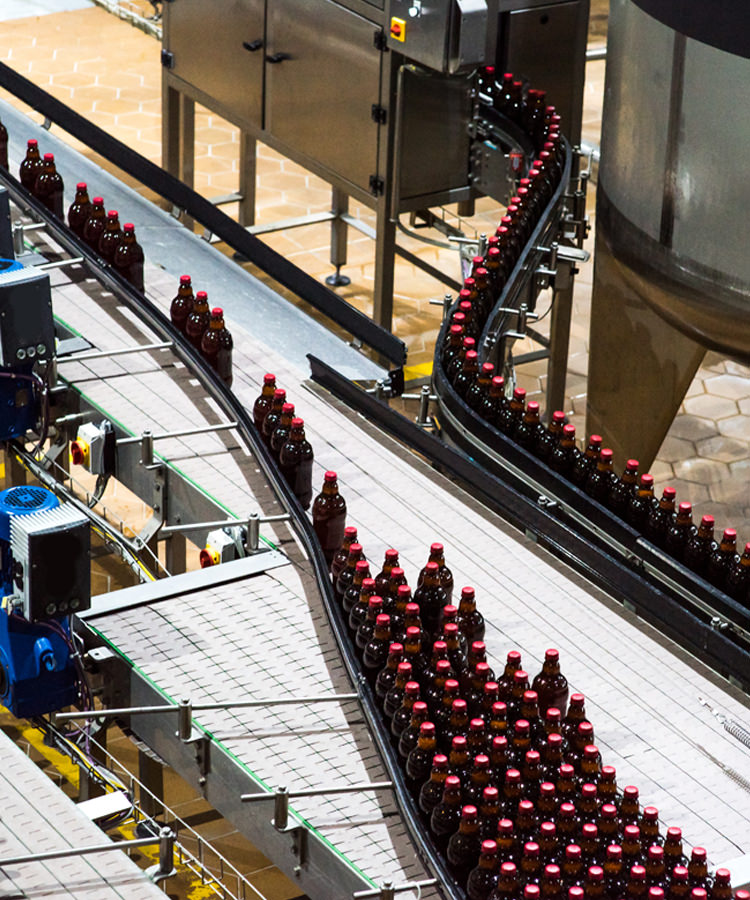See the 2018 ranking of the most popular beer brands in the world!
Beer news may be dominated with the newest cool craft beer releases and rebel brewers sticking it to the man, but for the majority of the world, beer means macro beer. As such, a handful of brands owned by just a few parent companies make up the overwhelming majority of beer consumed ever year.
According to Euromonitor International data obtained by Drinks Business, these were the biggest-selling beer brands by volume in 2016.
Corona Extra
Coors Light held the No. 10 spot in the 2015 data, but people really found their beach in 2016: Corona sales jumped 7.92 percent from 2015, resulting in some 663,600,000 gallons’ worth of beer. Produced by Grupo Modelo in Mexico, the Corona brand defines Mexican beer in the eyes of many Americans. The company is owned by beer behemoth AB InBev (although Constellation Brands owns the export license for Corona in the U.S.).
Brahma
This Brazilian beer started in 1988 and then was bought out by AB InBev in 2005. Brahma was No. 9 in 2015 as well despite losing 3.3 percent of sales volume. The brand makes most of its money in South America, although the AB InBev buyout added 15 other countries to the distribution list.
Harbin
China’s oldest and fourth-largest brewery comes in at No. 8, with 3.1 percent volume growth since 2015. It was also No. 8 in 2015. A little historical note: Harbin was the first brewery to use corn instead of rice in China. It’s been owned by the Chinese government and SABMiller, but now it’s owned by none other than AB InBev. (Starting to see a pattern yet?)
Heineken
We finally break out of the AB InBev trend with our No. 7 beer, Heineken. You can find a Heineken just about anywhere in the world, and it’s one of the most widely recognized beer brands. The Heineken company itself owns a long list of beers (the Heineken parent company became the second-largest beer company after AB InBev purchased MillerCoors), but the green bottle is by far the most recognizable no matter where you’re at.
It was No. 7 in 2015 as well.
Yanjing
Yanjing, or Beijing Beer, is a popular Chinese beer that was also No, 6 in 2015, despite sales volume falling nearly 5 percent. It’s been available in the U.S. since 2015, but that hasn’t appeared to help its sales numbers.
One enlightening review from a user on BeerAdvocate reads: “A truly crappy beer.”
Skol
Skol was designed in 1964 with the goal of becoming an international mega-beer brand. Breweries from Britain, Canada, Sweden, and Belgium collaborated on the beer. And while something worked — the brand was the fifth-largest in 2015 as well — things didn’t exactly work out how the founders intended. The beer is owned by AB InBev in Africa and South America, and European beer giant Carlsberg in the rest of the world.
Oh, yeah, it’s also only 2.8 percent alcohol by volume in some markets. Maybe there’s something to this whole low-alcohol and non-alcoholic beer thing?
Tsingtao
China’s second biggest domestic beer (15 percent of the Chinese beer market) takes the No. 4 spot in worldwide beer sales with 1.2 billion gallons sold. Outside China, it’s the No. 1-selling Chinese beer in the U.S. Compared to 2015, though, things aren’t looking so good. Sales volume fell 9.2 percent in 2016, causing it to drop from the second biggest beer brand to the fourth.
Budweiser
The granddaddy of cheap American macro lager is the third-best-selling beer brand in the world. Sure, its parent company owns most of the beers on this list, but O.G. Budweiser defined the American palate for much of the 1980s. The brand has lost a lot of traction and cool factor thanks to the rise of craft beer (and thanks to Budweiser’s parent company, AB InBev, buying up 10 craft breweries), but it remains an ever-present acknowledgment of America’s beer origins. And while it may seem like a dinosaur to some, it’s not frozen in antiquity: Volume sales increased 4.5 percent in 2016 compared to 2015.
Bud Light
Budweiser’s thinner, younger, hipper sibling comes in as the second-best-selling beer brand — barely. Bud Light sold around 1.24 billion gallons of beer whereas Budweiser sold around 1.23 billion gallons.
That might change soon, though. Bud Light volume fell 3.4 percent in 2016. Guess not everyone is #UpForWhatever if that whatever means Bud Light.
Snow
The largest beer brand in the world is sold almost exclusively in China. Which makes sense when you consider China has around 20 percent of the world’s population.
In 2005, Snow was No. 11 on the list of most-sold beers, but look at it now. Snow was previously part of SABMiller and China Resources Enterprises, but when SABMiller merged with AB InBev, global regulators forced a sale to happen.
The No. 1-selling beer brand sells 2.8 trillion gallons of beer. That’s more than enough to fill all of Manhattan with half a foot of beer. Put that in your glass and sip it.
